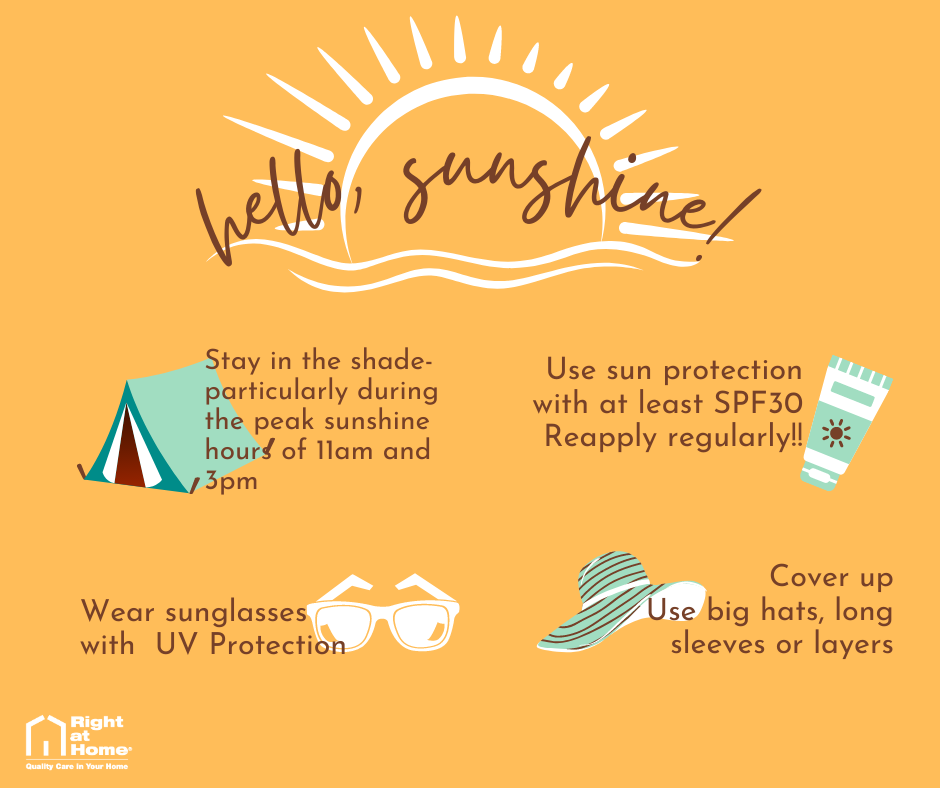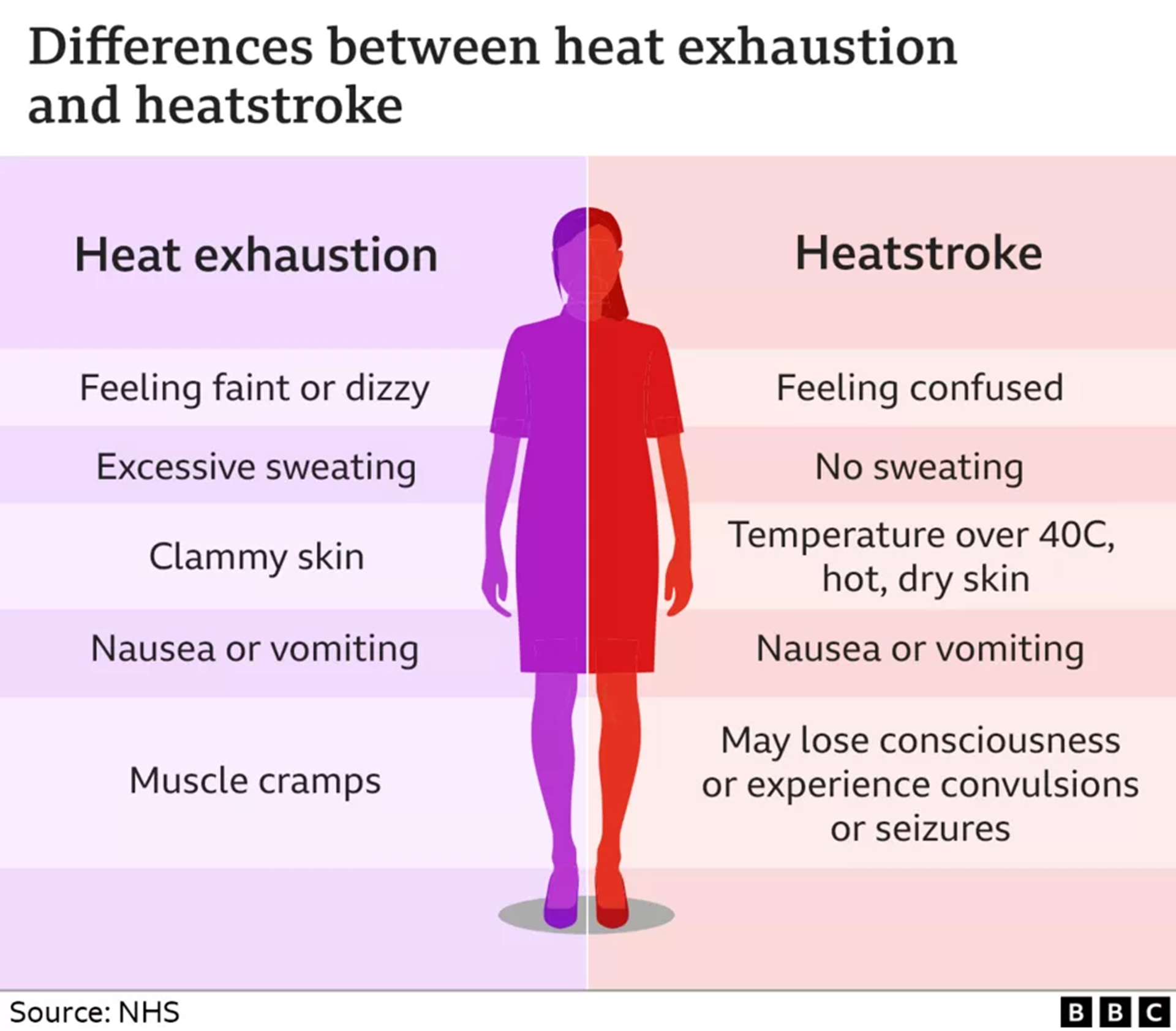Heat exhaustion vs Heat stroke
Know the difference, know the signs and know how to help

Published: 10/06/2023
There is a difference between heat exhaustion and heatstroke
The former whilst not being a medical emergency, if it is not dealt with, can lead to the latter and requires medical help and treated as an emergency. With summer in full swing it is important to know how to avoid heat exhaustion and how to recognise its signs and treat it promptly.
Our body’s ideal core temperature is 37C. In 2022 the UK hit it’s record breaking temperatures of 40C and above, this year in early June we have already seen temperatures rising fast and edging closer to 30C with the Met Office issuing health warnings. This is important to bear in mind, when the air gets hotter than our skins temperature or if sweat doesn’t evaporate, we start to gain heat and our body core temperature starts to rise above its comfortable ideal state. Once our body goes above it’s 37C, it becomes overwhelmed and needs a way to cool down before it reaches heat exhaustion level.
So, if you’re thinking of going out in the hot weather, be careful not to over exert and expose yourself to the hot sun, these are all ways of rising your body’s temperature even further.

The signs of heat exhaustion:
- tiredness
- dizziness
- headache
- feeling sick or being sick
- excessive sweating
- skin becoming pale and clammy or getting a heat rash,
- cramps in the arms, legs and stomach
- fast breathing or heartbeat
- a high temperature
- being very thirsty
- weakness
The symptoms of heat exhaustion are often the same in adults and children, although children may become irritable or become floppy and sleepy too.
If someone is showing signs of heat exhaustion they need to be cooled down and given fluids.
Things you can do to cool someone down
If someone has heat exhaustion, follow these steps:
Move them to a cool place.
Remove all unnecessary clothing like a jacket or socks.
Get them to drink a sports or rehydration drink, or cool water.
Cool their skin – spray or sponge them with cool water and fan them. Cold packs, wrapped in a cloth and put under the armpits or on the neck are good too.
Stay with them until they're better.
They should start to cool down and feel better within 30 minutes.
Heatstroke
Heat exhaustion can turn into heatstroke, which should be treated as an emergency as your body is no longer able to regulate its core temperature.
If after 30 minutes of resting in a cool place and attempts have been made to cool down and they are showing the follow symptoms call 999:
- a very high temperature
- hot skin that's not sweating and might look red (this can be harder to see on brown and black skin)
- a fast heartbeat
- fast breathing or shortness of breath
- confusion and lack of coordination
- a seizure or fit
- loss of consciousness
Put the person in the recovery position if they lose consciousness while you're waiting for help
Would you like to kick start your summer with a new career?
If you want to discuss our current vacancies with someone from our friendly team, please contact us by phone at 01983 218318 or you can email us at paul.butler@rightathome.co.uk
Any questions or would like to meet us? Come in for a cuppa! We are on 7 High Street, Bembridge (just above the fishmongers)
We are recruiting! You can apply to join our team today.
